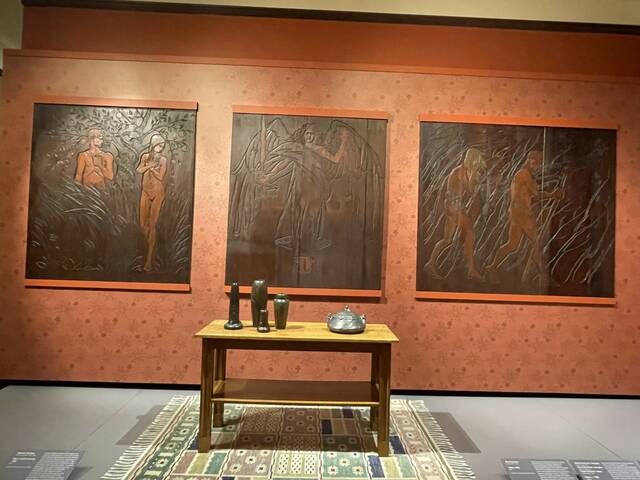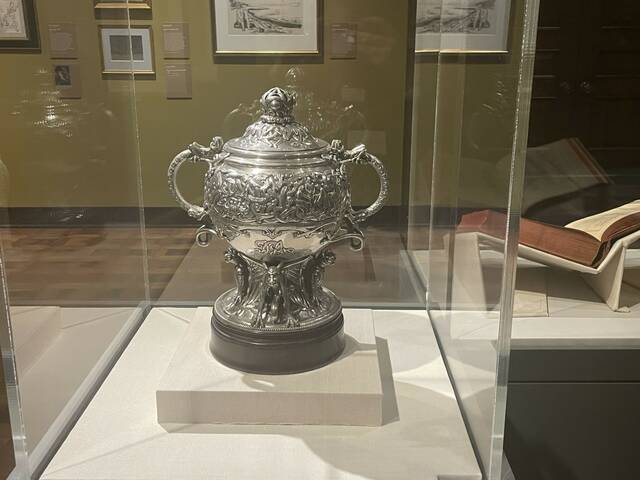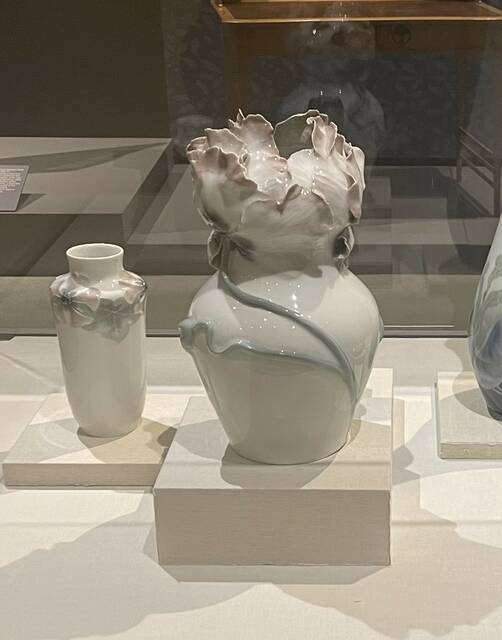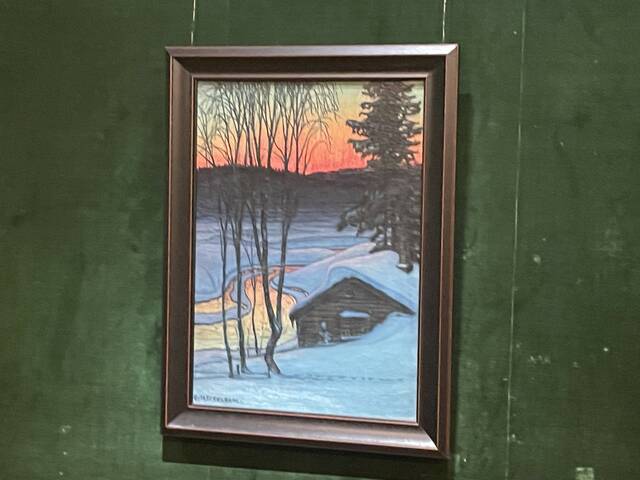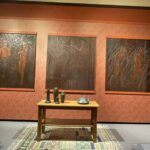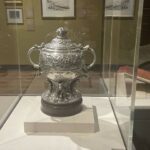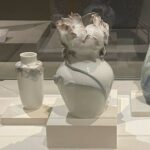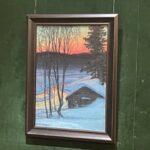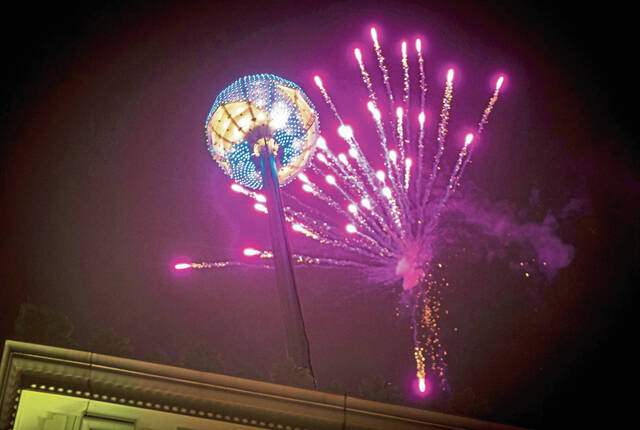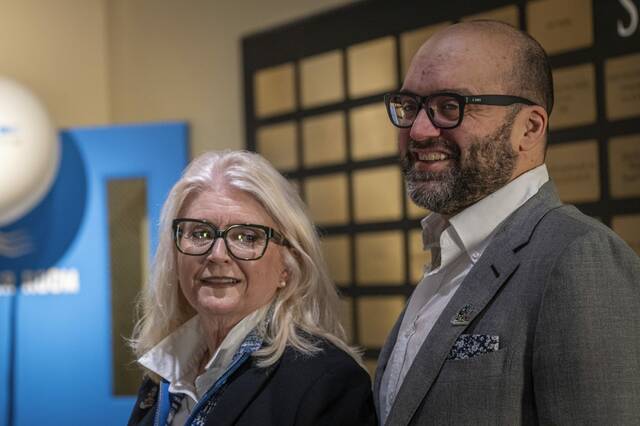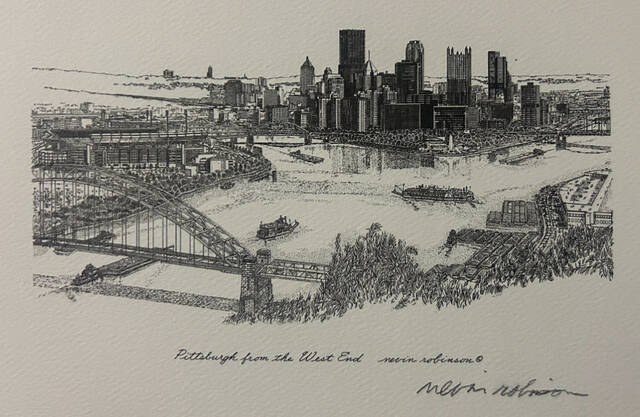When it comes to European art, the Scandinavian countries at the northern rim of the continent — Denmark, Norway, Sweden and Finland — are often underrepresented in museums and art history classes. Starting on Saturday, the Frick Pittsburgh will provide a striking primer with its new exhibition, “The Scandinavian Home.”
The exhibit draws from the private collection of Dr. David and Susan Werner, who provided more than 100 works and artifacts to fill a series of galleries. “The Scandinavian Home” will be open through Jan. 11, 2026.
It is situated in galleries typically reserved for displaying the museum’s permanent collection.
“This show was so big that it absorbed, like a liquid. It would take as much space as we were willing to give it,” said chief curator Dawn R. Brean.
Not only does the exhibit explore different art movements and styles that were prominent in the late 19th and early 20th centuries, but it also puts displayed works into historical context. The time period also fits nicely with the Frick’s Gilded Age roots.
Perhaps surprisingly, considering the region’s icy climes and frequent lack of daylight, there’s a strong sense of the outdoors that runs through Nordic art tradition.
“There is such a strong emphasis on nature and the physical environment kind of shaping the Nordic people or shaping their mentality and their mindset,” Brean said.
At a media preview on Friday, Brean showed off one of her favorite pieces in a gallery of Nordic landscapes, “Sunset in Värmland” by Swedish artist Otto Hesselbom.
“He was a part of the National Romantic movement, which takes the drama and the power of nature, but is also taking the landscape as a way to set themselves apart from their other neighbors,” she said.
The late 19th century was a time of nation-building in Scandinavia; at the time, Norway and Finland were not their own nations, and borders all over the globe were in the process of shifting. Creating national identity through art, beauty, home and community was a priority for the creators of that period.
The exhibition contains plenty of pieces beyond paintings, including furnishings, tapestries, vases and other home decorations and items.
Also part of that search for national identity amongst the four Nordic countries was a desire to look back at folk art, folklore and other traditions of the region.
“They are looking back at these folk craft traditions as this kind of pure representation of their national heritage, and so they’re reinventing them for a new audience, making a new modern art out of the past,” Brean said.
“Everything was made for the home,” she added. “It was meant to be displayed in the home, to be decorative, to be used.”
There’s a gallery section devoted to the Rackstad Colony, an artist collective in Sweden that sprung up in the late 19th century.
“These are some of the most spectacular landscapes,” Brean said of the collection of paintings created by the collective.
The specificity of the exhibit’s time period also places it in a transitional period of industrialization and urbanization all over the world, including in Scandinavia. This resulted in an emphasis on the home as a cozy refuge and retreat for many Nordic artists and makers.
An example in “The Scandinavian Home” is a trio of carved wooden panels by Danish artist Stephan Sinding, part of a set of seven that depict the story of Adam and Eve.
“It was part of his home decor,” Brean said. “But he would also invite patrons and fellow artists into his space. So his home was also a showcase of his particular talents.”
This philosophy of creating a beautiful home and thus a beautiful life also fits nicely with the Danish philosophy of hygge, or creating a happy environment through coziness, comfort and conviviality.
There is also a gallery of pieces created by Norwegian artists looking back at their history and folklore — especially that of the Vikings — in their national effort towards independence from Denmark. The exhibition includes a tapestry by Gerhard Munthe depicting a scene inspired by Norwegian mythology and a silver tureen by Henrik Møller decorated with a depiction of the legend of Ragnar Lodbrok, a great king and Viking warrior.
Brean noted the use of color and imagination in Munthe’s tapestry. The work was shown at the 1900 World’s Fair in Paris to great critical acclaim.
The last gallery is devoted to paintings and objects from the Art Nouveau style. These artists responded to the larger international art movement of the time period with their own Nordic flair. Especially in Sweden, that meant a larger depiction of the movement toward social democracy.
“That is how they are defining home, on that really broad scale of the communities they’re building,” Brean said. “You can definitely see the difference, I think, between this and the other rooms.”
The Art Nouveau room also contains another of Brean’s favorite pieces, a ceramic vase designed by Alf Wallander and manufactured by the Rörstrand Manufactory.
“They’d been around since the 18th century, but they developed an art pottery department in the 1890s.”
The vase is adorned with the petals of poppies in a pale, delicate pink. “They really perfected an underglaze painting technique which makes that pink feel so muted,” Brean said.
The vase was also highly acclaimed at the 1900 Paris World’s Fair.
Brean credited the Werners’ knowledge, as well as the help of consulting curators Patricia Berman and Michelle Facos, with placing the works in a historical and academic context.
The exhibit is divided up by movements and style, but Brean also wanted to show the historical distinctions between the Nordic countries and their lifestyles.
“We didn’t want to lump them all together because, of course, there are four independent nations, but there are so many shared visual — but also kind of theoretical — commonalities that the artists shared during this time period. … We wanted to share what tied them together.”
“The Scandinavian Home” will open on Saturday with a curators’ talk scheduled for 3 p.m. The exhibit will be open until Jan. 11, 2026. For tickets and more information, visit thefrickpittsburgh.org.


